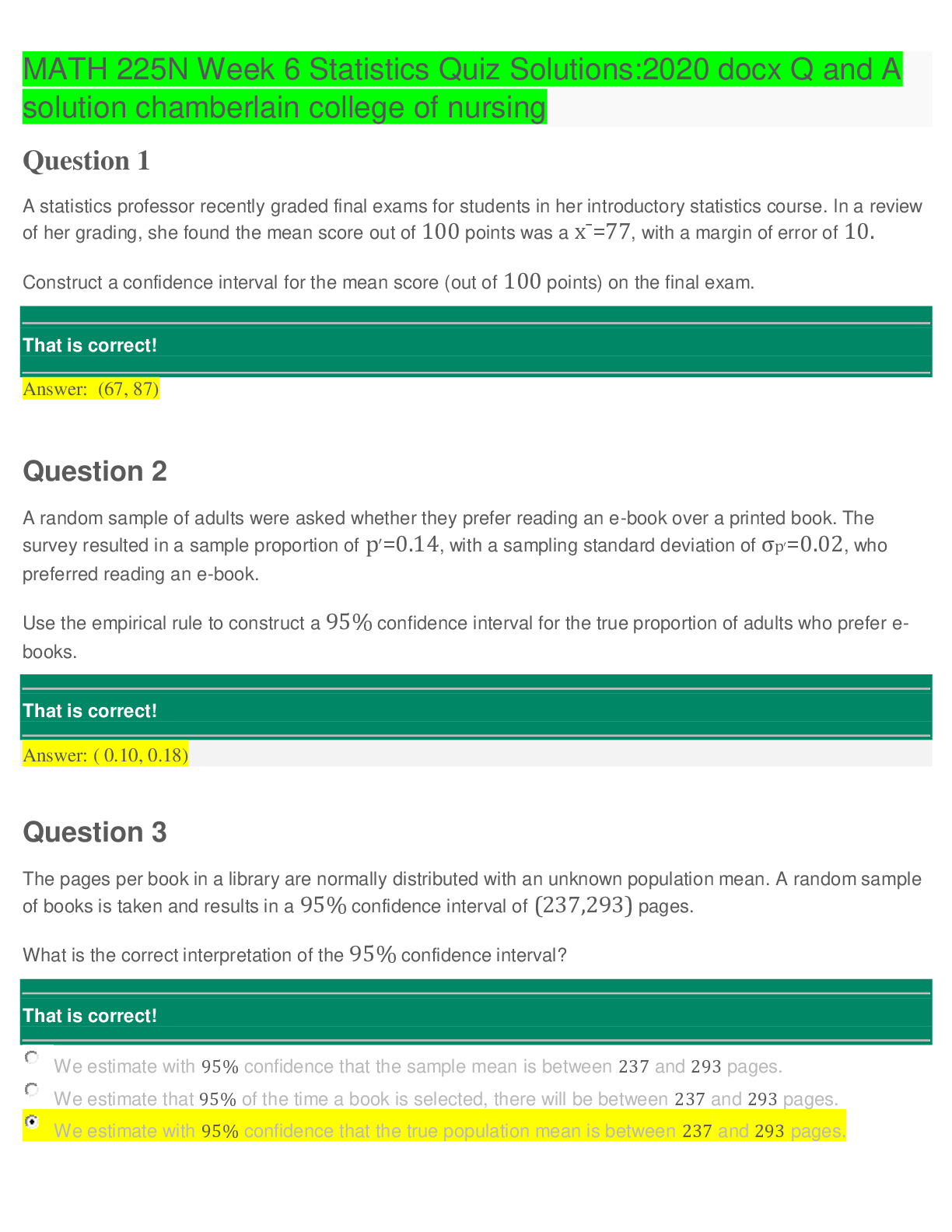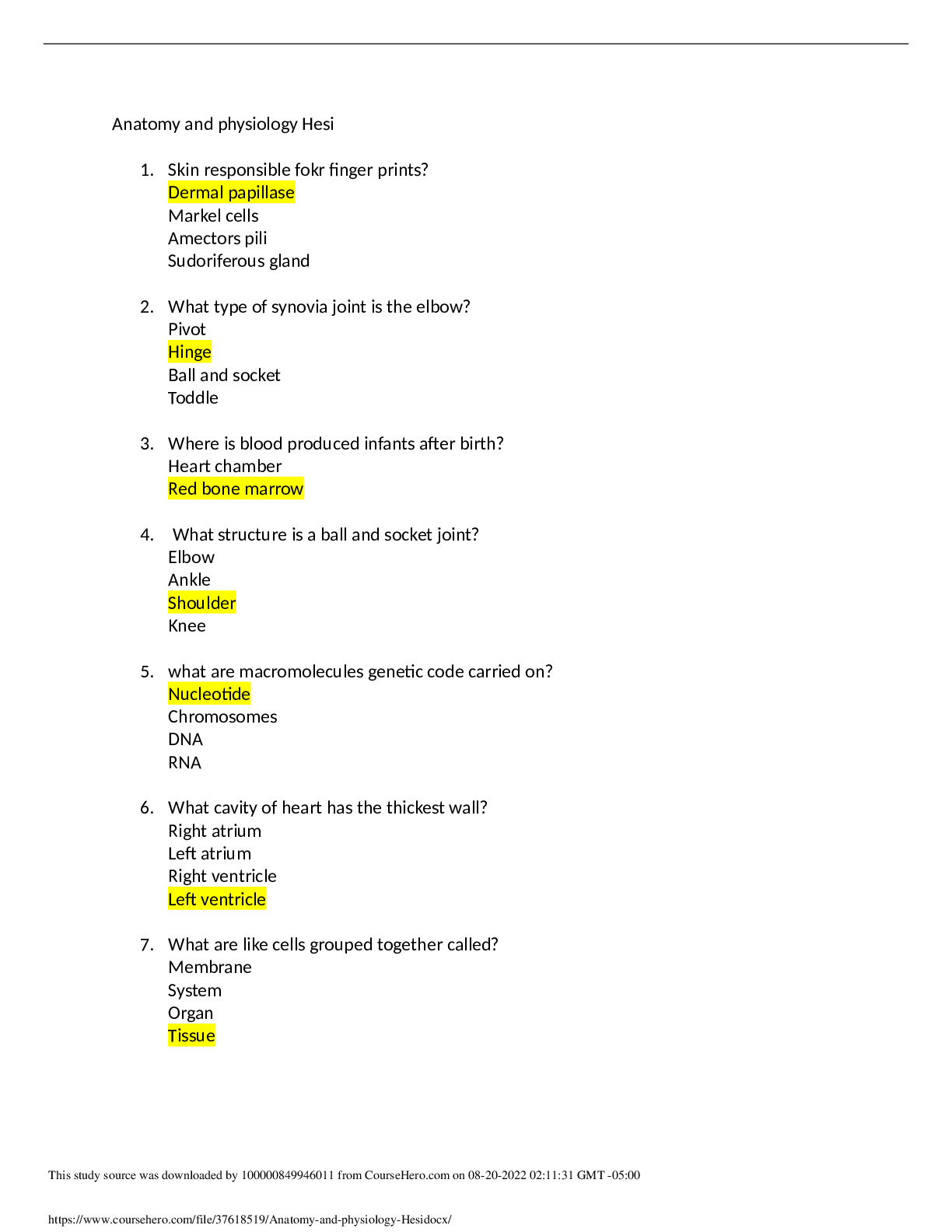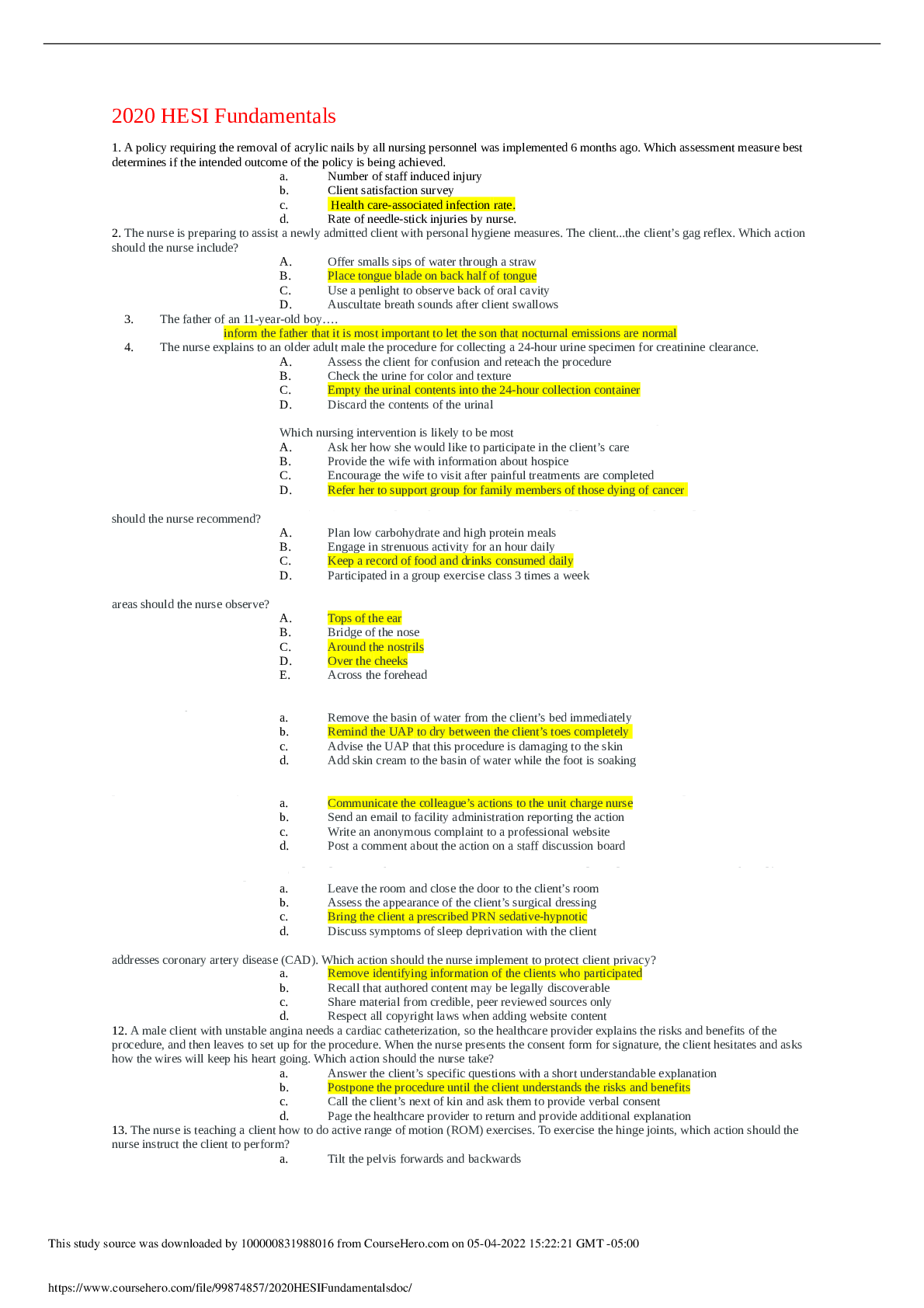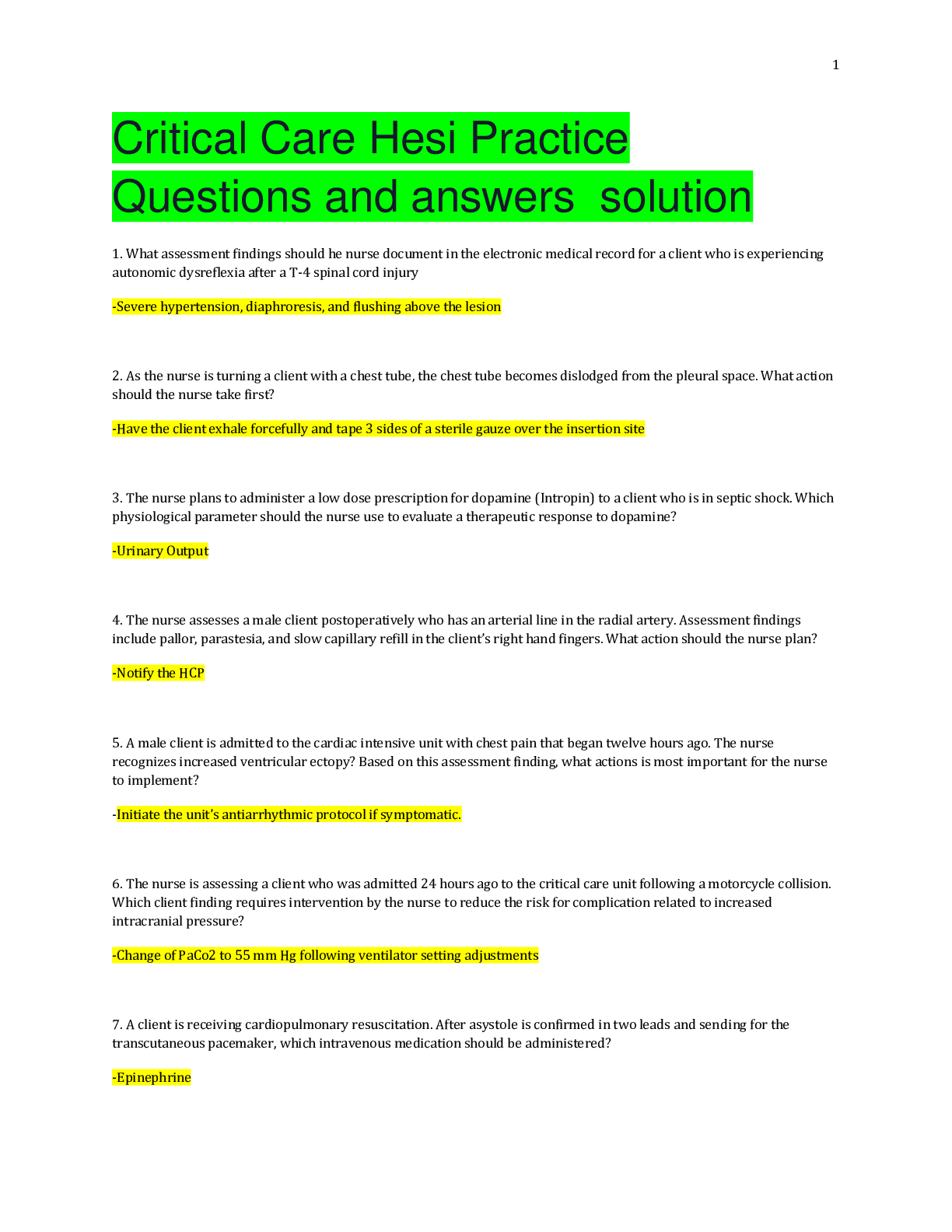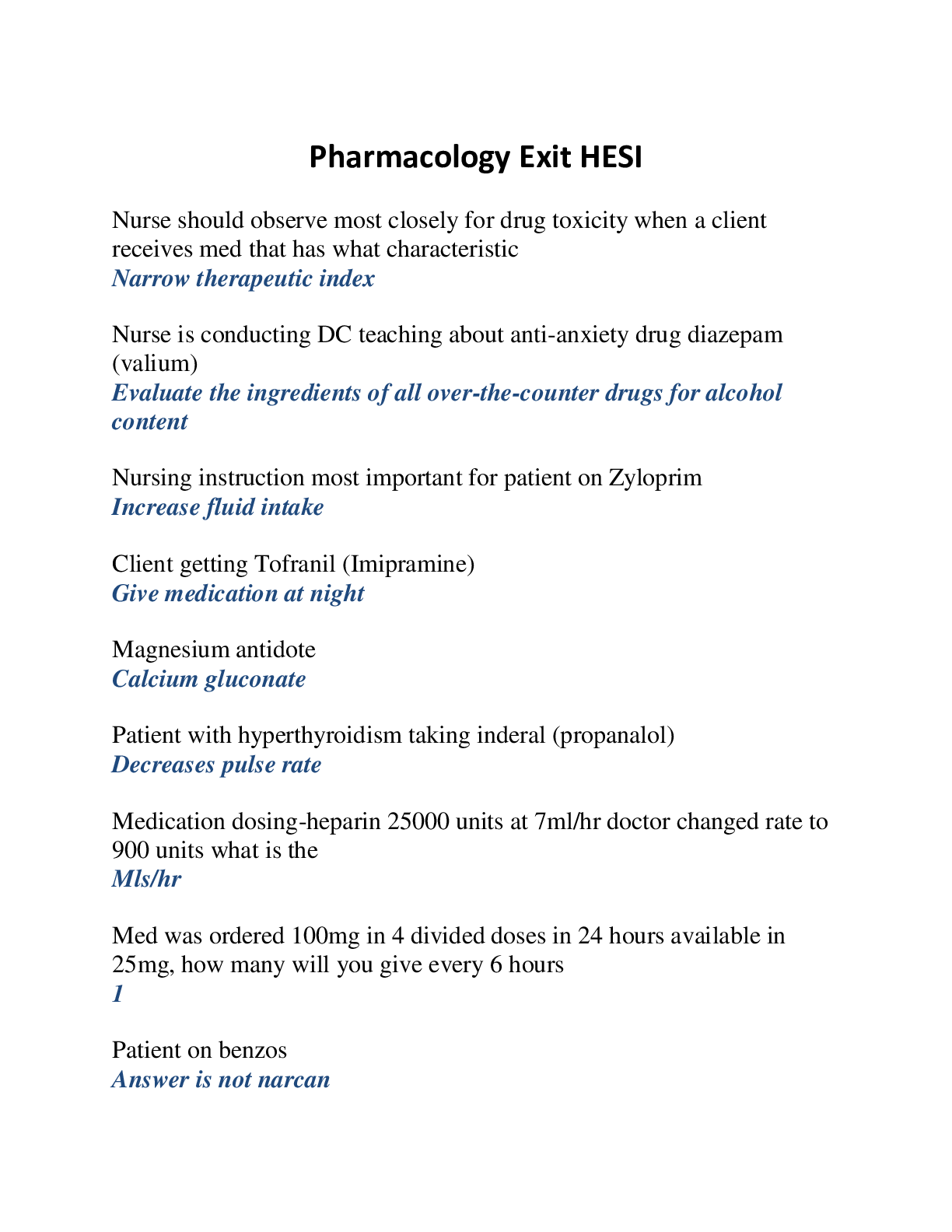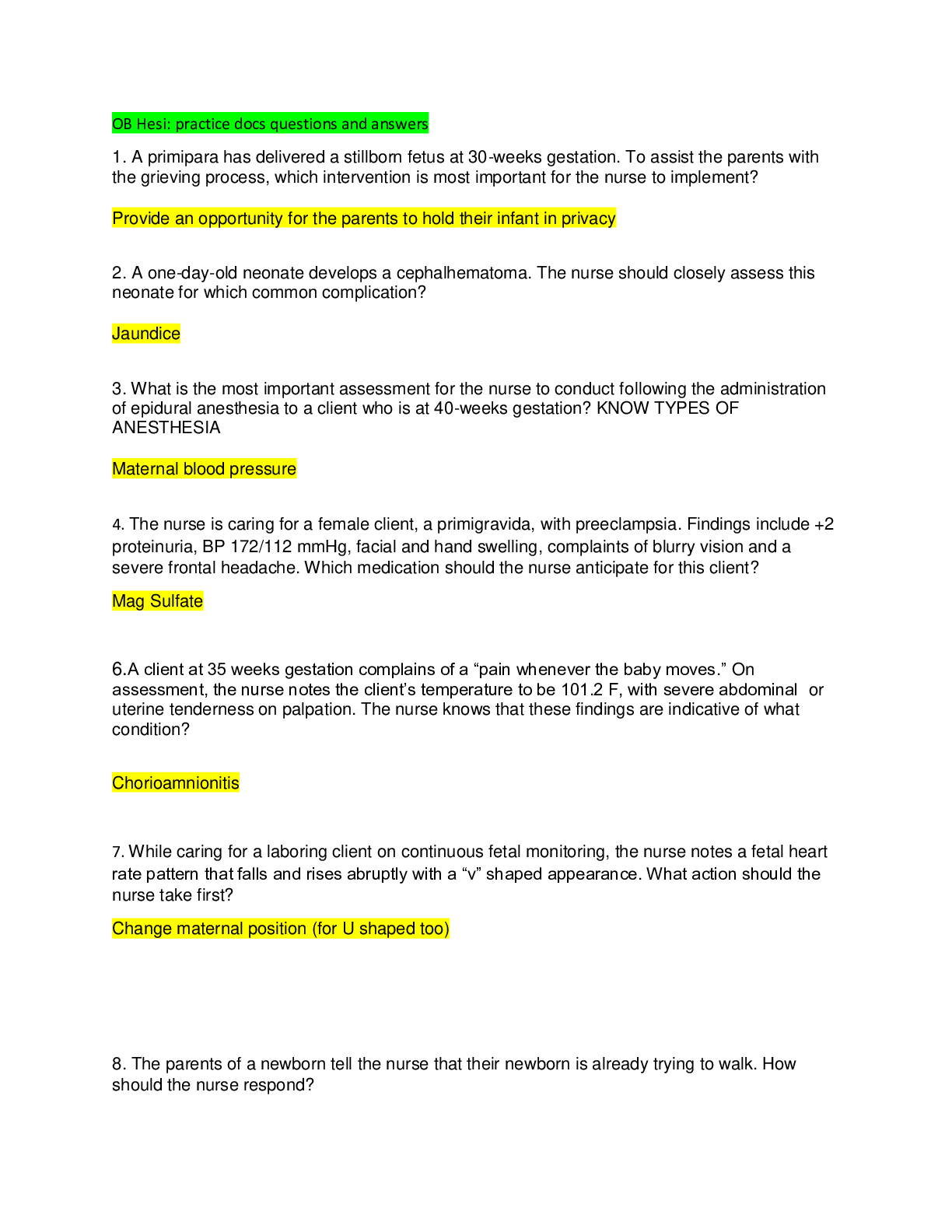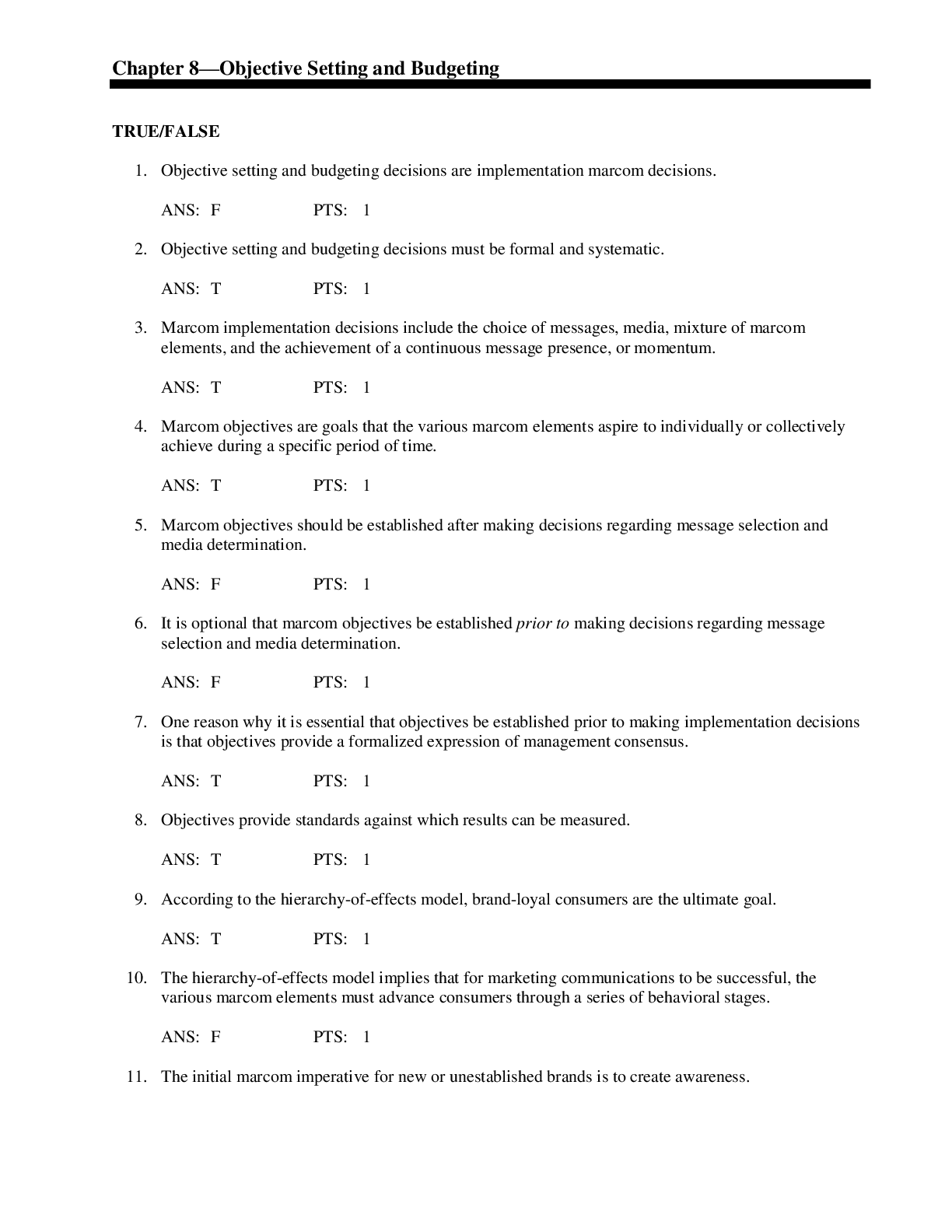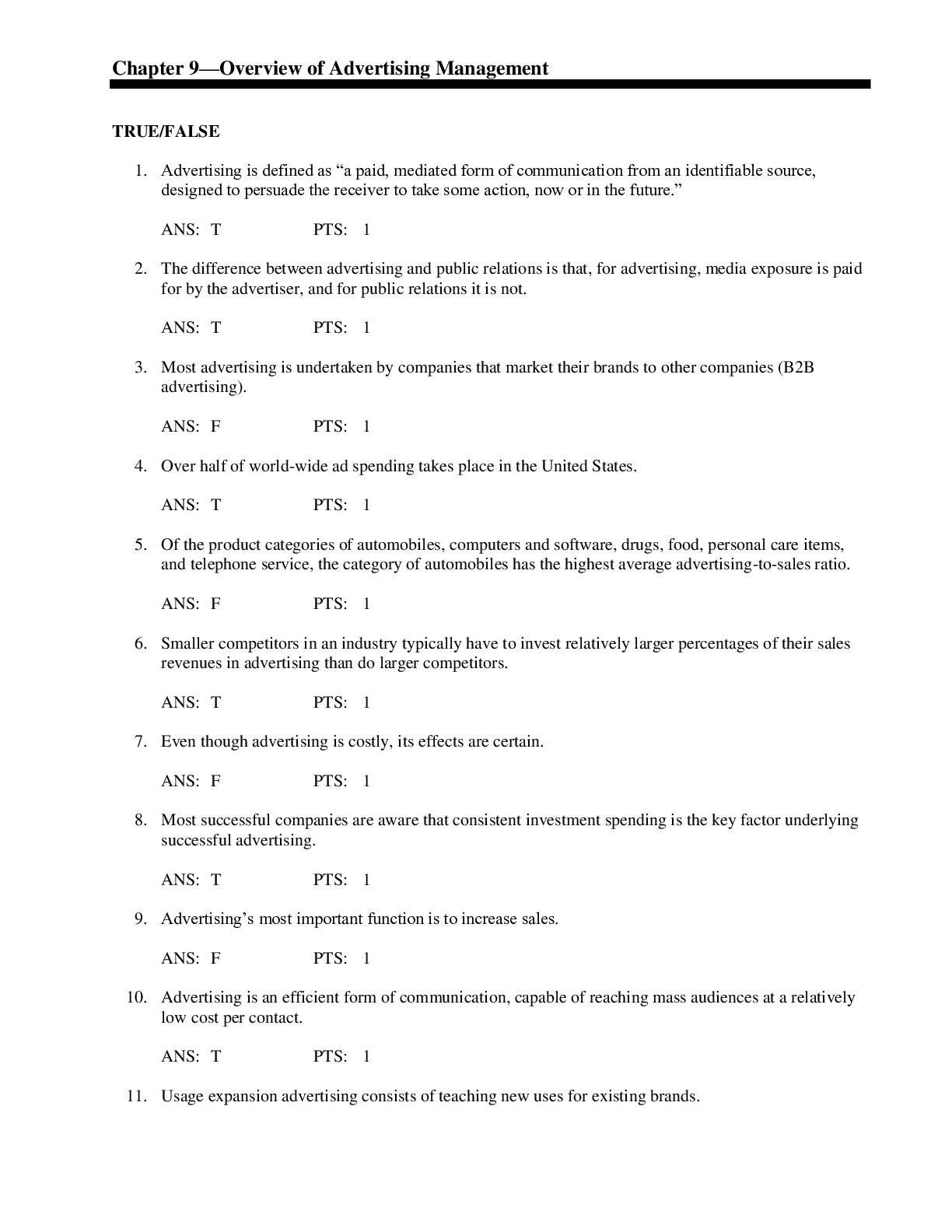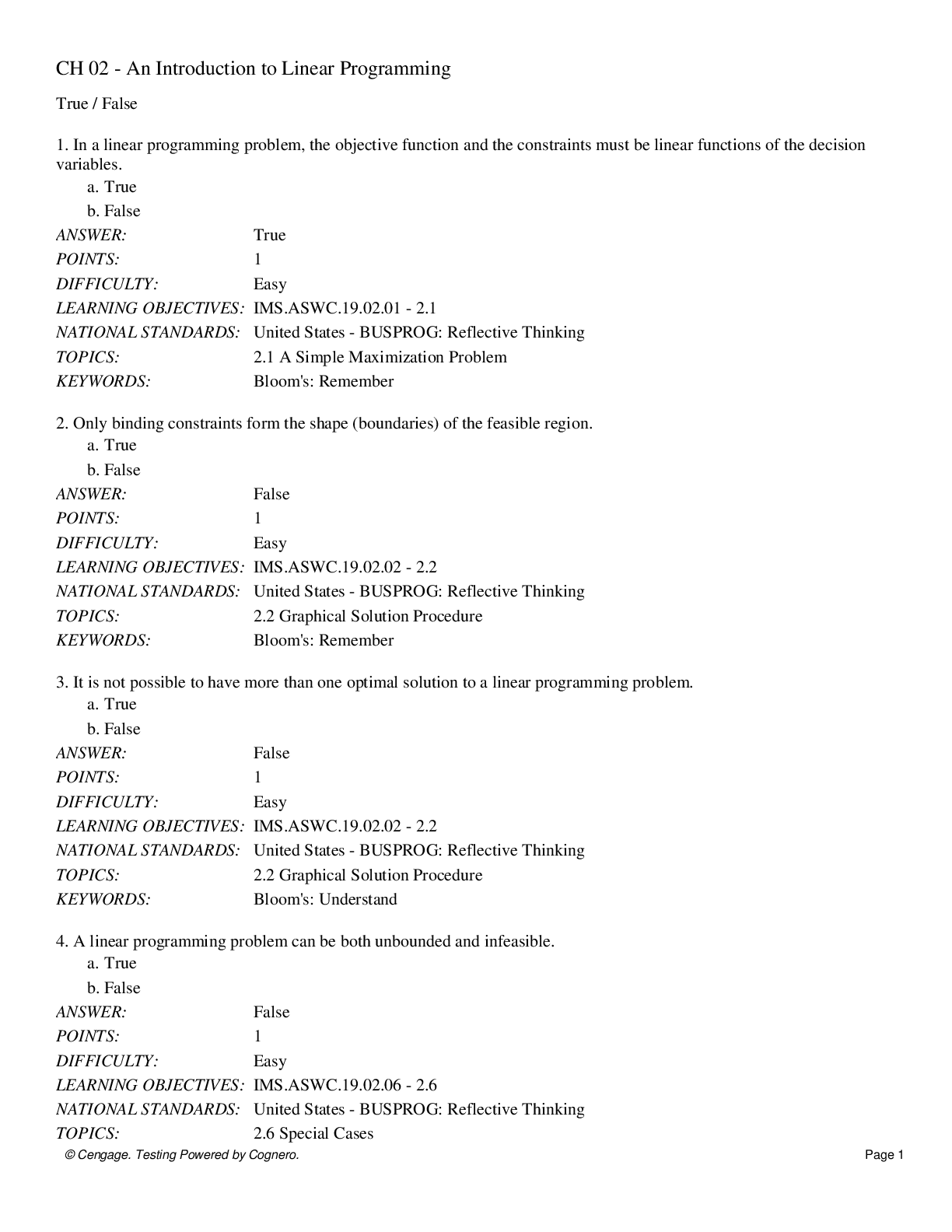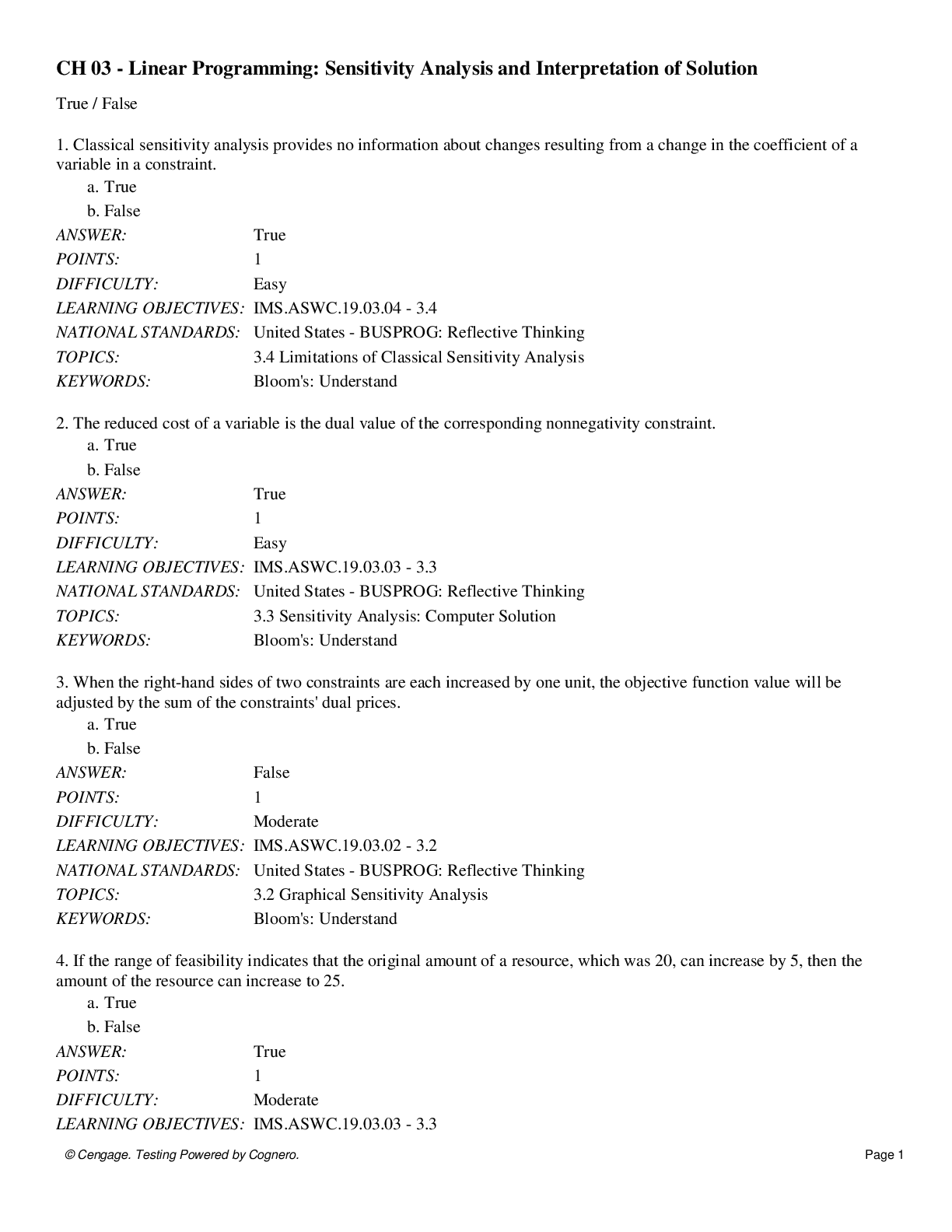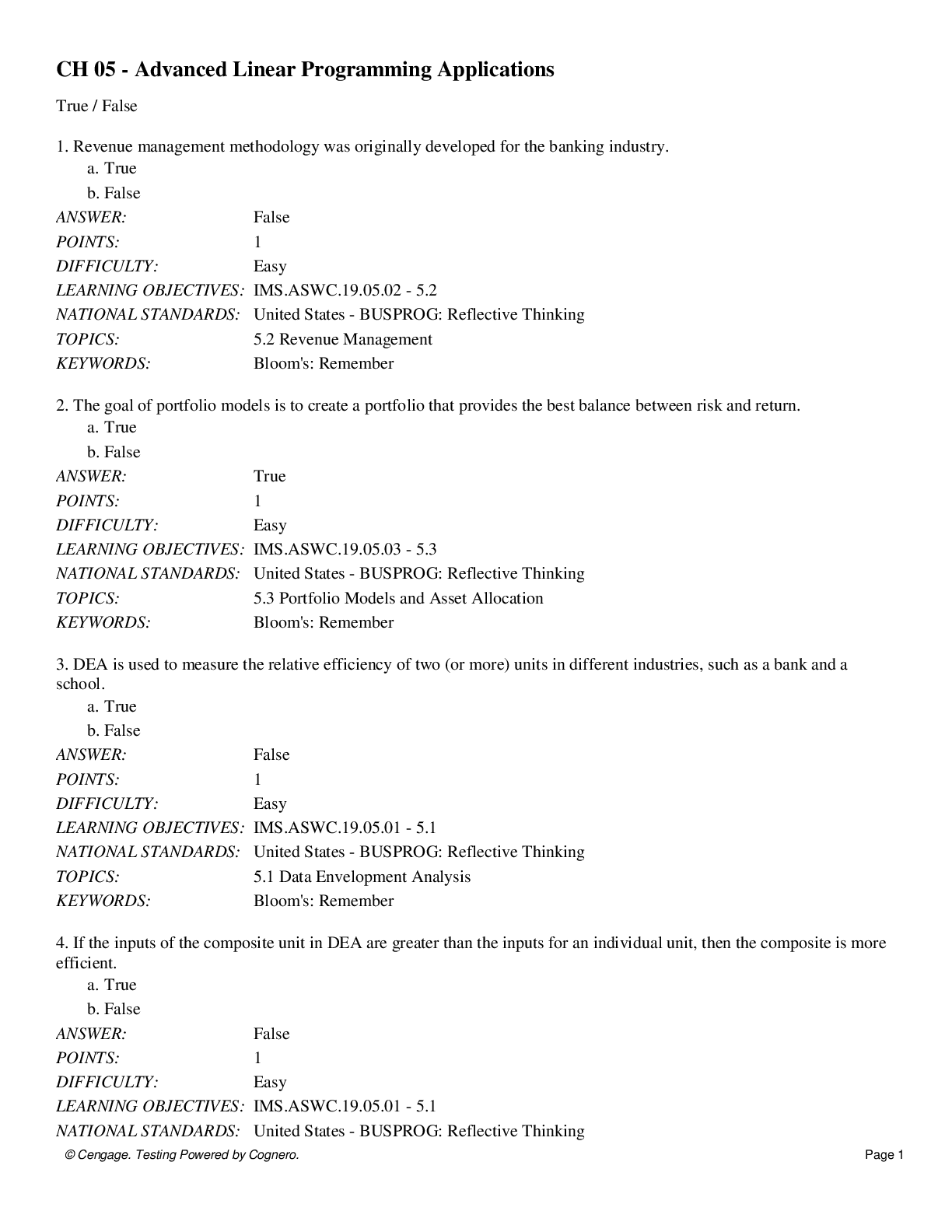Economics > QUESTIONS & ANSWERS > Eco100Review Quiz: Week 8 Chapter 12 Quiz new questions and answers docx (All)
Eco100Review Quiz: Week 8 Chapter 12 Quiz new questions and answers docx
Document Content and Description Below
Eco100Review Quiz: Week 8 Chapter 12 Quiz new questions and answers docx 1. Economists define the labor force to include A. people who are working. B. only people who are working full−time. C. ... People who are not working but are actively looking for a job, and people who are working. D. all individuals of working age, regardless of whether they are working or looking for a job. 2. The unemployment rate is the number of unemployed people A. divided by the total workingminus−age population. B. and the number of people working fewer than their desired number of hours, divided by the number of people who are working or looking for work. C. divided by the sum of the number of people who are working and the number of people who are looking for work. D.divided by the number of people who are working. 3. ________ unemployment is most closely associated with periods of falling GDP. A. Structural B. Voluntary C. Frictional D. Cyclical 4. Economists say that the economy is at "full employment" when the A. frictional unemployment rate is zero. B. structural unemployment rate is zero. C. cyclical unemployment rate is zero. D. total unemployment rate is zero. 5. The real−nominal principle can be stated as A. production generates income. B. only the manufacture of real goods is production. C. only final goods and services should be counted in GDP. D. what matters to people is the purchasing power of money or income. 6. The index most widely used by the government and the private sector to measure changes in the cost of living is the A. the chain−type price index. B. the GDP deflator. C. Consumer Price Index. D. Producer Price Index. 7. The percentage rate of change in the price level is called the A. chain−type price index. B. rate of absorption. C. rate of inflation. D. Consumer Price Index. 8. The biggest problem caused by a deflation is that A. prices fall. B. interest rates rise. C. people cannot repay their debts. D. wages fall. 9. The costs associated with recalculating prices and printing new price lists when there is inflation are known as A. menu costs. B. diminishing costs. C. shoe leather costs. D. chain−index costs. 10. One cost of unanticipated inflation is A. people cannot repay their debts. B. both lenders and borrowers lose. C. nominal income falls below real income. D. arbitrary redistributions of income. [Show More]
Last updated: 1 year ago
Preview 1 out of 3 pages
Instant download
 answers.png)
Buy this document to get the full access instantly
Instant Download Access after purchase
Add to cartInstant download
Reviews( 0 )
Document information
Connected school, study & course
About the document
Uploaded On
Dec 15, 2020
Number of pages
3
Written in
Additional information
This document has been written for:
Uploaded
Dec 15, 2020
Downloads
0
Views
38




